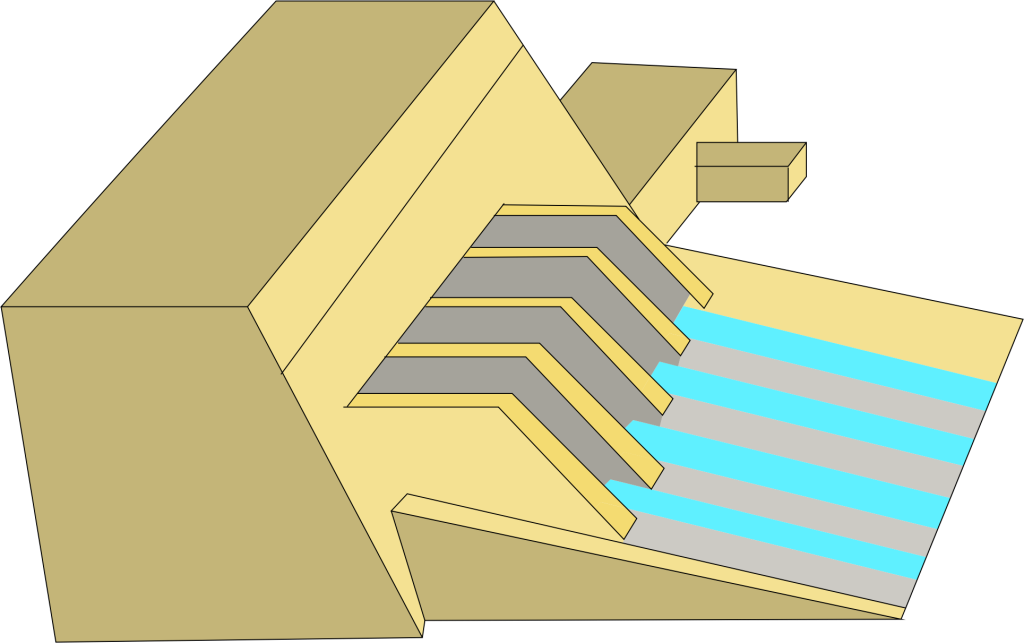Dam Design

Introduction to Dam Design
Hydropower dams play a crucial role in harnessing the power of flowing water to generate electricity. The design of these dams involves careful planning and engineering considerations to ensure safety, efficiency, and environmental sustainability. Hydropower dam design involves multiple components and considerations that are essential for the successful implementation of hydropower projects.
Question 1: What is the purpose of Hydropower Dam Design?
a) To generate electricity from solar energy
b) To generate electricity from flowing water
c) To store water for irrigation purposes
Answer: b) To generate electricity from flowing water
Components of Hydropower Dams
Hydropower dams consist of various components, including:
- Reservoir: The water storage area behind the dam, created by blocking a river or a stream.
- Intake Structure: The structure that allows water to enter the hydropower system and reach the turbines.
- Turbines: Mechanical devices that convert the energy of flowing water into rotational mechanical energy.
- Generator: The device connected to the turbines that converts the rotational energy into electrical energy.
- Spillway: The structure that provides controlled release of excess water from the reservoir.
Question 2: What are some components of Hydropower Dams?
a) Solar panels and wind turbines
b) Reservoir, Intake Structure, Turbines, Generator, Spillway
c) Tidal turbines and wave energy converters
Answer: b) Reservoir, Intake Structure, Turbines, Generator, Spillway
Key Design Considerations
Hydropower dam design involves several key considerations:
- Hydrology: Understanding the flow and availability of water in the river or stream is crucial for determining the size and capacity of the dam.
- Geotechnical Engineering: Assessing the geological conditions of the dam site to ensure stability and safety.
- Environmental Impact: Evaluating the potential environmental impacts of the dam on the surrounding ecosystem and implementing mitigation measures.
- Structural Design: Designing a robust and durable structure capable of withstanding the hydraulic forces and loads imposed by the water.
Question 3: What are some key design considerations for Hydropower Dams?
a) Wind patterns and solar radiation
b) Hydrology, Geotechnical Engineering, Environmental Impact, Structural Design
c) Wave characteristics and tidal patterns
Answer: b) Hydrology, Geotechnical Engineering, Environmental Impact, Structural Design
Environmental Considerations
Hydropower dam design requires careful consideration of environmental impacts:
- Fish Passage: Providing fish passage systems or alternative fish habitats to mitigate the disruption of fish migration.
- Water Quality: Implementing measures to maintain or improve water quality both upstream and downstream of the dam.
- Ecosystem Preservation: Identifying and preserving important habitats and ecological features affected by the dam.
- Sediment Management: Addressing sedimentation issues to ensure proper sediment transport and prevent downstream erosion.
Question 4: What are some environmental considerations in Hydropower Dam Design?
a) Fish passage, water quality, ecosystem preservation, sediment management
b) Noise pollution and visual impact
c) Energy efficiency and cost-effectiveness
Answer: a) Fish passage, water quality, ecosystem preservation, sediment management
Benefits of Hydropower Dam Design
Hydropower dam design offers several benefits:
- Renewable Energy: Hydropower is a renewable energy source that reduces dependence on fossil fuels and decreases greenhouse gas emissions.
- Stable Power Generation: Hydropower provides a stable and reliable source of electricity, enabling grid stability and supporting the integration of other intermittent renewable energy sources.
- Flood Control: Dams can help regulate water flow, reducing the risk of downstream flooding during heavy rainfall or snowmelt.
Question 5: What are some benefits of Hydropower Dam Design?
a) Non-renewable and polluting
b) Renewable and stable power generation
c) Environmental degradation and high costs
Answer: b) Renewable and stable power generation
Case Studies
Well Done !